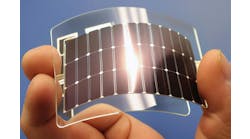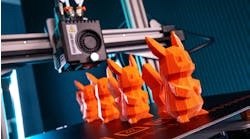When I first started in this business, I was in full-on hype-spitting, future-seeking, geek-out mode pretty much constantly.
For me, everything was a revolution—there was the robot revolution, the big data revolution. There were 3D printing, augmented reality, wearable, cloud computing, mass customization revolutions. It was a revolution of revolutions! Everything was new and exciting and just on the verge of changing everything about everything.
My headlines quickly devolved into a couple of clichéd catchphrases and endless rows of exclamation points.
At the height of this frenzy, I had my first interview with Dave Burns way back in his ExOne days. That’s when he finally knocked some sense into me.
Read the latest interview with Burns in the June cover story, "Full Metal Printing."
In that conversation, when I brought up moon bases and the total end of centralized manufacturing, Dave talked about part densities and build envelopes. When I talked about complete supply chain overhauls and the obsolescence of high volume manufacturing, he talked about throughput and cooling channels in injection molding.
It was the most boring conversation I’d ever had. And also the most important.
Dave was making a point then—at the very apex of hype and excitement—that most potential industrial AM users seem to be making now: it doesn’t matter that it’s cool. It doesn’t matter that it’s different or exciting. What matters is if it works, if it adds value and practical capability to a market that lives and dies on boring metrics and KPIs.
Until the machines do that, they are no good for anyone.
That interview fundamentally changed my perspective, not just on 3D printing, but on innovation as a whole.
There is danger, I think, in getting fixated on revolutions, on exclamation points and hyperbole. As far as I can tell, nothing is worth much at all until it’s mundane.
Big data changed the world, for example, but not until the world was sick of hearing about it. Likewise, we all predicted that one day everything would be in the cloud and we tech journalists wrote hundreds, thousands of articles laying it all out. And long after readers stopped clicking, things really did go to the cloud.
And now, after the dust has settled and the stock values have rationalized from the great 3D revolution frenzy, manufacturers have started talking about AM in terms of throughput and standards and all their boring metrics.
Which is by far the most exciting thing that could have happened. It means this industry is finally ready for the real world.
To me, boring has become the new mark of revolution. It’s the one sign we should all look for in an environment of endless exciting opportunities. It’s become my new credo: the world doesn’t change until wild ideas meet dull practicality.











